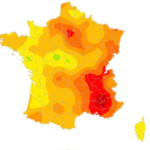Link to Pubmed [PMID] – 26993883
Lancet 2016 May;387(10033):2125-2132
BACKGROUND: The emergence of Zika virus in the Americas has coincided with increased reports of babies born with microcephaly. On Feb 1, 2016, WHO declared the suspected link between Zika virus and microcephaly to be a Public Health Emergency of International Concern. This association, however, has not been precisely quantified.
METHODS: We retrospectively analysed data from a Zika virus outbreak in French Polynesia, which was the largest documented outbreak before that in the Americas. We used serological and surveillance data to estimate the probability of infection with Zika virus for each week of the epidemic and searched medical records to identify all cases of microcephaly from September, 2013, to July, 2015. Simple models were used to assess periods of risk in pregnancy when Zika virus might increase the risk of microcephaly and estimate the associated risk.
FINDINGS: The Zika virus outbreak began in October, 2013, and ended in April, 2014, and 66% (95% CI 62-70) of the general population were infected. Of the eight microcephaly cases identified during the 23-month study period, seven (88%) occurred in the 4-month period March 1 to July 10, 2014. The timing of these cases was best explained by a period of risk in the first trimester of pregnancy. In this model, the baseline prevalence of microcephaly was two cases (95% CI 0-8) per 10,000 neonates, and the risk of microcephaly associated with Zika virus infection was 95 cases (34-191) per 10,000 women infected in the first trimester. We could not rule out an increased risk of microcephaly from infection in other trimesters, but models that excluded the first trimester were not supported by the data.
INTERPRETATION: Our findings provide a quantitative estimate of the risk of microcephaly in fetuses and neonates whose mothers are infected with Zika virus.
FUNDING: Labex-IBEID, NIH-MIDAS, AXA Research fund, EU-PREDEMICS.


